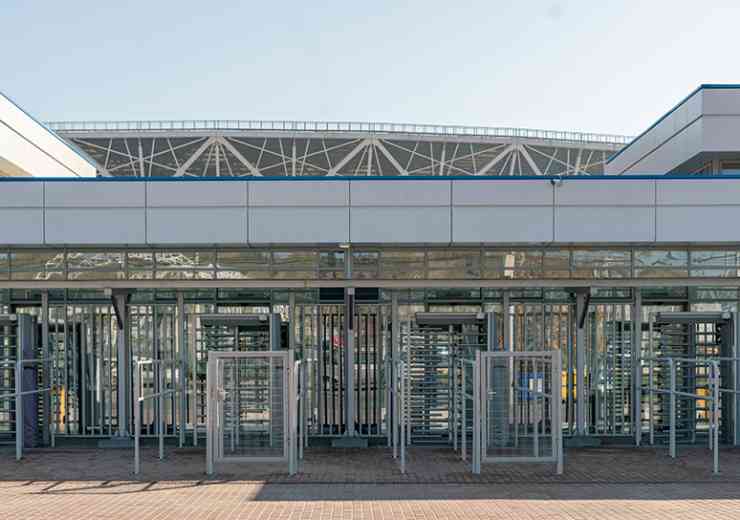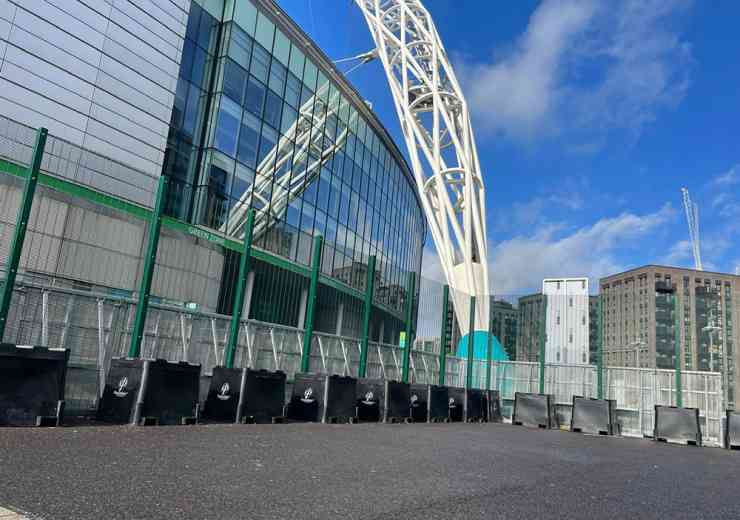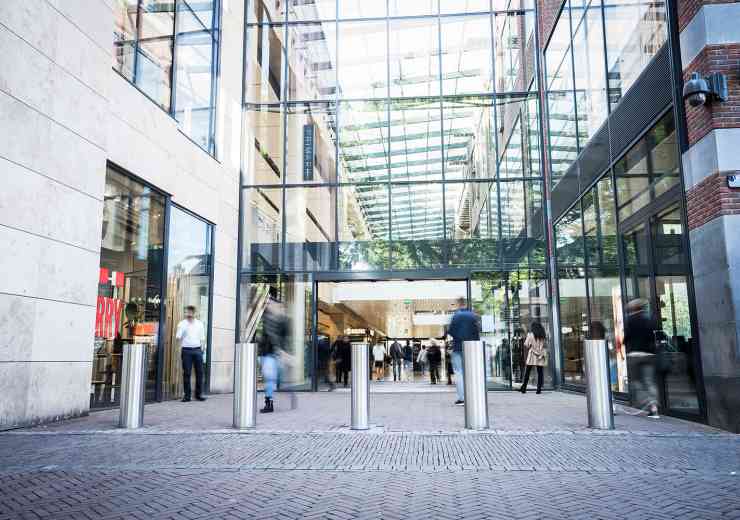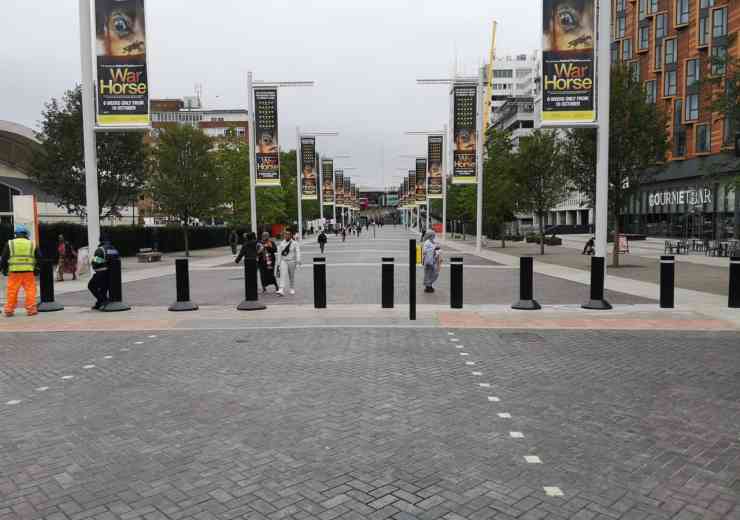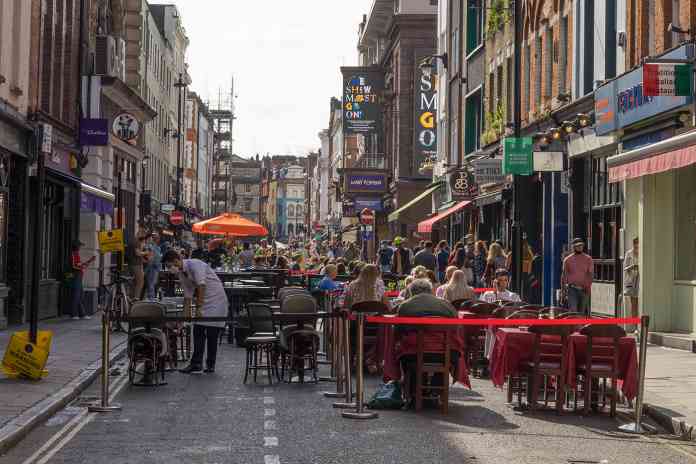
Protecting people as we reinvent the high street
Delivering tailored and flexible security solutions
There is a balance to be struck between creating a secure environment for temporary retail and hospitality facilities and enabling people to enjoy their leisure time without undue concern about safety. While vigilance is important, the move towards pop-up markets and outdoor dining environments is all about enhancing the high street experience so our approach to security must be proportionate and sympathetic.
Specification should begin with a collaborative process, working with the local authority or property owner to establish the nature of the event or location, anticipated footfall, practical requirements, aesthetic preferences, and potential risk factors. This is an essential step in understanding the vulnerabilities of the location to inform a detailed risk assessment process, while ensuring that operational and commercial factors are built into the solution.
The right solution should integrate authorised vehicular access points which allow entry for emergency vehicles, to use one example. This may involve selecting a pedestrian permeable solution that can be configured with authorised vehicle access points to allow vehicular access at certain times of day – for deliveries, for example – or on non-event days. Health and safety must be considered too, with quality assured installation that avoids trip hazards or crowd surges.
Aesthetics are also important. Specification of any perimeter protection or HVM system installed as part of a strategy to attract urban footfall must consider the need to make people feel welcome and safe. The right solution can be integral to this aim, with customisation to enable wayfinding, information, decorative graphics, branding or advertising. Some even accommodate integration with street furniture, such as planters, benches, and bins.
The long-term impact of the installation on the property or public realm location must be factored into the choice of protection too. We would always suggest trialling schemes with a temporary, surface-mounted solution prior to a design or scheme that may require a socketed solution with a foundation that demands design and potential planning works. Sometimes a surface-mounted solution is more appropriate if civils works can’t be considered due to heritage sites or the presence of services immediately below that restrict even shallow-mount foundations.
Protection from vehicle as a weapon attacks
Vehicle as a weapon attacks are amongst the most serious vulnerabilities for pop-up events and outdoor dining facilities and the potential risk of errant vehicles should also be factored in to managing this risk.
It is important that the solution specified – or combination of solutions – is based on the level of risk for the location. It is not sufficient to select any IWA14 certified system and take a tick box approach to managing risk: the chosen system(s) must be aligned to the vulnerabilities of the location. The CPNI’s guidance on Hostile Vehicle Mitigation (HVM), demonstrates a sliding-scale of effectiveness for different systems and it is essential to align impact resistance to the level of risk and choose a system that is suitable for installation in a configuration as close as possible to the certification test configuration.
A number of factors can affect the effectiveness of the HVM system, including weather conditions, the topography of the location, the maintenance and condition of the HVM equipment and the calibre of installation, along with the size and speed of any vehicle that may attack. Only by understanding the exact installation conditions and following strict quality assurance processes can the HVM provider offer an ‘as tested’ performance for the project.
Quality of installation is essential to the integrity of any HVM protection and the provider should provide well-maintained equipment, technical expertise and robust quality assurance processes for a variety of equipment so that they can advise on the most suitable solution for the application, location and threat vulnerability risk assessment.
Perimeter Protection
Not all the hospitality businesses or markets affected by the new rules on safety and security need protection from vehicle as a weapon attacks. In some locations, the priority will be to install perimeter protection to prevent unauthorised access, limit numbers for crowd management and capacity purposes, or enable access restrictions to allow an entry charge.
The same operational, cost, aesthetic and impact implications apply, however. Consequently, surface-mounted solutions that offer rapid deployment and removal, flexibility, effective pedestrian and/or vehicular access, and robust loading to ensure the right level of safety for the anticipated crowd capacity provide the most appropriate specification.
Temporary hoarding systems, such as the FenceSafe Hoard system installed by Crowdguard, may be ideal for pop-up markets. Not only do they enable access/egress control, but they are also anti-scale, anti-tamper products with loading gates for authorised vehicles. because they can be customised with graphics, wayfinding, and advertising, while restricting access. A temporary hoarding system could be used to prevent access to the rear of stalls, contributing to the correct flow of pedestrian traffic and effective crowd management, while improving security for stall holders. Fences can also use scrim, which can be branded or used to impede vision.
Responding to evolving requirements
Just like our towns and cities, security threats are constantly evolving, which is why the security industry must take a tailored, quality assured and pragmatic approach to responding to the safety, security and operational needs of every project. An end-to-end service, with technical expertise and quality assurance embedded in projects from specification through to installation, maintenance and removal is vital to keeping people safe, protecting commercial interests and, in the near future, compliance with UK Protect Duty legislation.
Deborah Ainscough is founder and director of crowd management and event safety specialist, Crowdguard, a member of the Perimeter Security Suppliers Association.



